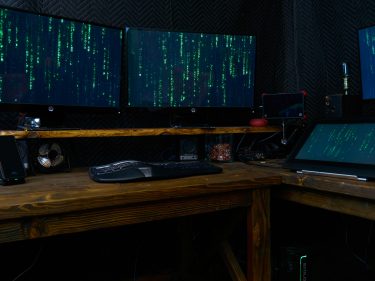BTC
102,868.06
+7.25%
ETH
3,852.88
+5.64%
USDT
1.00
-0.02%
XRP
2.29
-7.91%
SOL
235.77
-1.39%
BNB
720.94
-4.45%
DOGE
0.44309461
+4.57%
ADA
1.21
-0.23%
USDC
0.99987626
-0.02%
STETH
3,858.10
+5.92%
TRX
0.32160109
-15.85%
AVAX
51.34
-0.86%
SHIB
0.0₄31913
+4.66%
TON
6.86
-0.14%
LINK
23.91
-0.50%
XLM
0.48599210
-2.98%
WBTC
102,226.28
+6.36%
BCH
591.40
+4.72%
SUI
3.89
+9.27%
HBAR
0.29989939
-8.95%
Dec 4, 2024, 7:03 p.m. UTC

Welcome to The Protocol, CoinDesk’s weekly wrap-up of the most important stories in cryptocurrency tech development. I’m Marc Hochstein, CoinDesk’s deputy editor-in-chief for features, opinion and standards.
In this issue:
Story continues below
- Bitcoin gets a DEX, thanks to the Nomic bridge
- Union Labs gets $12M to build more bridges
- Base’s Jesse Pollak looks back on BALD
- Justin Drake discusses Ethereum’s Beam Chain plan … and Solana
STRENGTH FOR ETH: The Ethereum blockchain’s transaction revenue has increased substantially since Donald Trump’s U.S. election victory, Steno Research said in a Monday report. “This outcome is crucial for all on-chain activity,” wrote analyst Mads Eberhardt. The surge has led to higher staking rewards and more ether (ETH) being burned via transaction fees, the report said. “This combination strengthens Ethereum’s tokenomics,” Steno said, making ether a more appealing asset. Steno noted that the amount of USDT on the Ethereum network surpassed supply on the Tron blockchain for the first time in more than two years. This is a clear sign that on-chain activity is booming, resulting in greater demand for ether to facilitate transactions and higher transactional revenue. Read more.
BITCOIN GETS A DEX: Osmosis, a decentralized exchange (DEX) built for the Cosmos blockchain ecosystem, has opened a bridge to the Bitcoin network, as part of a pivot toward the world’s largest cryptocurrency. The decentralized autonomous organization (DAO) that governs Osmosis voted in favor of adopting Bitcoin bridge Nomic in June. The integration went live on Tuesday. Nomic’s bridge now enables users to deposit their BTC on the Bitcoin network in return for a token called alloyed BTC (allBTC) on Osmosis. “The novel thing with Nomic is that it’s all decentralized,” said Matt Bell, CEO of Turbofish, the team of developers behind Nomic. “The whole flow for users, from having Bitcoin in their wallet to the Bitcoin being on Osmosis, remains decentralized with Nomic. There’s no Bitgo or Coinbase in the middle.” In the big picture, Osmosis is one of several projects attempting to leverage the value tied up in BTC, by far the largest cryptocurrency by market cap, to bring liquidity to the broader crypto world. Read more.
UNION LABS GETS $12M: Union Labs, a project focused on helping blockchains communicate with each other, has raised $12 million in a Series A funding round led by Gumi Cryptos Capital and Longhash Ventures. The fresh round of funds will be used to expand Union’s core team, advance partner integrations, and contribute to ecosystem growth. The fundraising comes after Union raised $4 million in seed financing last year. Borderless Capital participated in the new round, along with angels from the Polygon, Celestia, Movement, and Berachain communities, Union Labs said Tuesday. Union’s core product is a modular, zero-knowledge (ZK) interoperability layer, designed to ease movement of assets between the Ethereum and Cosmos ecosystems. Its mainnet is supposed to go live in early 2025. Union is also interested in building in the Bitcoin ecosystem, “addressing the chain’s scripting limitations to enable secure asset transfers across Bitcoin L2s and the multichain ecosystem, enhancing DeFi on Bitcoin,” the team said. Read more
TO BALDLY GO… Critics say the Base blockchain, created by the Coinbase exchange, is too centralized. But if that were true, would anyone have been able to create BALD, a meme coin launched on Base last year whose name mocked Coinbase CEO Brian Armstrong’s shiny pate? “BALD showed that Base wasn’t going to be this place that was fully manicured, curated, controlled, and centralized,” says Jesse Pollak, Base’s founder. “Bald showed that Base wasn’t going to be this place that was fully manicured, curated, controlled, and centralized.” Too bad BALD also turned out to be a rug, as it were. Read more

Ethereum developer Justin Drake said his comprehensive proposal to overhaul the second-largest blockchain’s consensus layer isn’t about catching up with a rival, it’s about sticking around for the long haul.
Drake unveiled the proposal, known as the Beam Chain, at Ethereum’s biennial Devcon gathering in Bangkok last month, at a tim when the network’s native token ETH is lagging behind its counterparts at other major layer-1 blockchains.
The Ethereum network enjoyed wide adoption over the last few years, making it more expensive and slower to use. In response, a cohort of layer-1s, known as “Ethereum killers,” emerged in 2020 to compete with Ethereum on transaction speeds, and Solana has been seen as the leader of the back.
Recently, activity on Solana has exploded, mainly thanks to the surge of memecoins on the blockchain, with users wondering whether it will overtake Ethereum as the “hot” chain.
But Drake said he doesn’t see Solana as a threat to Ethereum, and neither does he see the Beam Chain as a way to restore Ethereum’s edge in the short term.
The Beam Chain “is all about improving the long-term health and security of the consensus layer, it has nothing to do with performance,” Drake said in an interview with CoinDesk.
“Solana has no consideration for health. The only thing they care about is performance. They care about reducing latency and increasing throughput,” Drake added.
CLICK HERE FOR THE FULL INTERVIEW BY COINDESK’S MARGAUX NIJKERK
What are the odds?
Deals and grants
Greasing the skids
Regulatory and policy
Calendar (See #content-announcements channel in Slack)
- Dec. 4-5: India Blockchain Week, Bangalore
- Dec. 5-6: Emergence, Prague
- Dec. 9-12: Abu Dhabi Finance Week
- Dec. 11-12: AI Summit NYC
- Dec. 11-14: Taipei Blockchain Week
- Jan 9-12, 2025: CES, Las Vegas
- Jan. 15-19: World Economic Forum, Davos, Switzerland
- January 21-25: WAGMI conference, Miami.
- Jan. 24-25: Adopting Bitcoin, Cape Town, South Africa.
- Jan. 30-31: PLAN B Forum, San Salvador, El Salvador.
- Feb. 1-6: Satoshi Roundtable, Dubai
- Feb. 19-20, 2025: ConsensusHK, Hong Kong.
- Feb. 23-24: NFT Paris
- Feb 23-March 2: ETHDenver
- May 14-16: Consensus, Toronto.
- May 27-29: Bitcoin 2025, Las Vegas.
As Deputy Editor-in-Chief for Features, Opinion, Ethics and Standards, Marc oversees CoinDesk’s long-form content, sets editorial policies and acts as the ombudsman for our industry-leading newsroom. He is also spearheading our nascent coverage of prediction markets and helps compile The Node, our daily email newsletter rounding up the biggest stories in crypto.
From November 2022 to June 2024 Marc was the Executive Editor of Consensus, CoinDesk’s flagship annual event. He joined CoinDesk in 2017 as a managing editor and has steadily added responsibilities over the years.
Marc is a veteran journalist with more than 25 years’ experience, including 17 years at the trade publication American Banker, the last three as editor-in-chief, where he was responsible for some of the earliest mainstream news coverage of cryptocurrency and blockchain technology.
DISCLOSURE: Marc holds BTC above CoinDesk’s disclosure threshold of $1,000; marginal amounts of ETH, SOL, XMR, ZEC, MATIC and EGIRL; an Urbit planet (~fodrex-malmev); two ENS domain names (MarcHochstein.eth and MarcusHNYC.eth); and NFTs from the Oekaki (pictured), Lil Skribblers, SSRWives, and Gwar collections.





